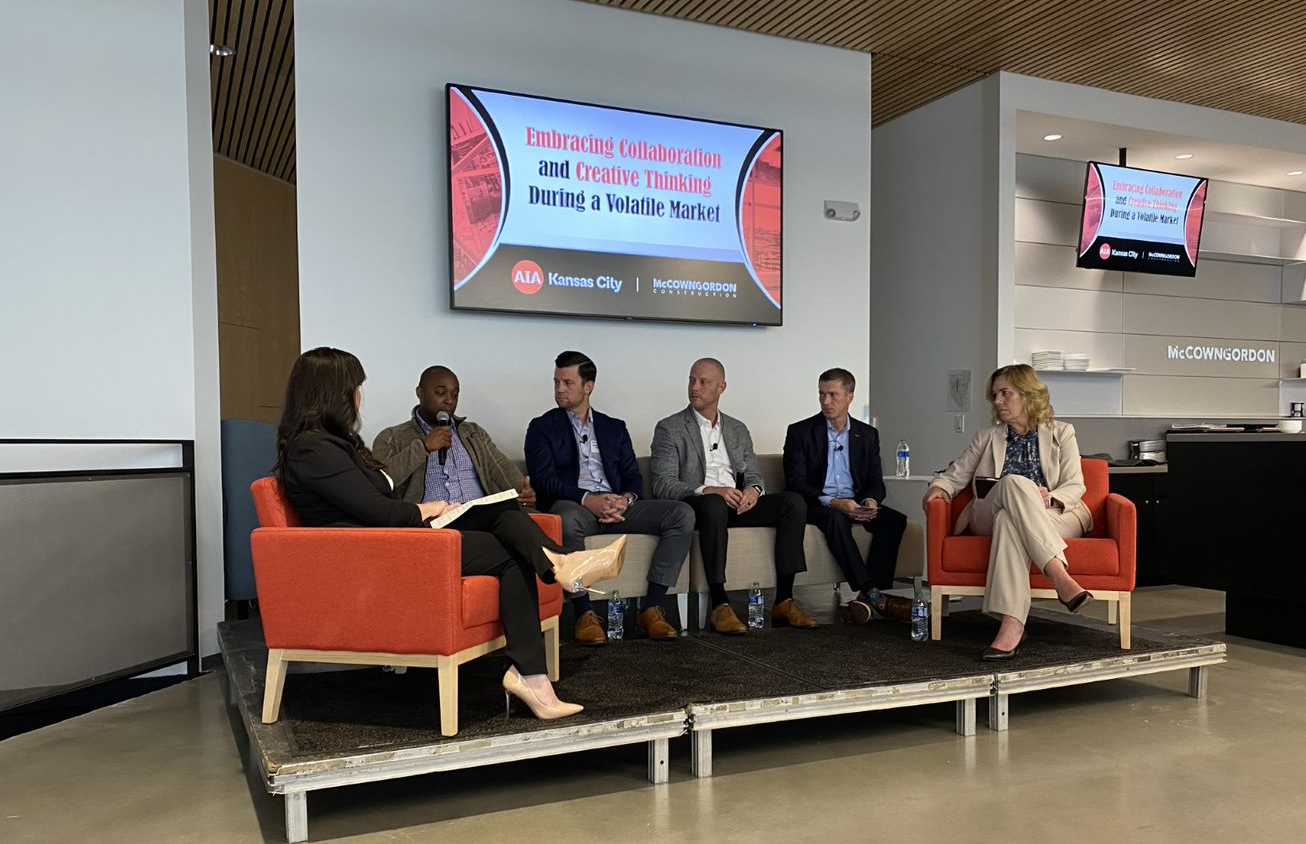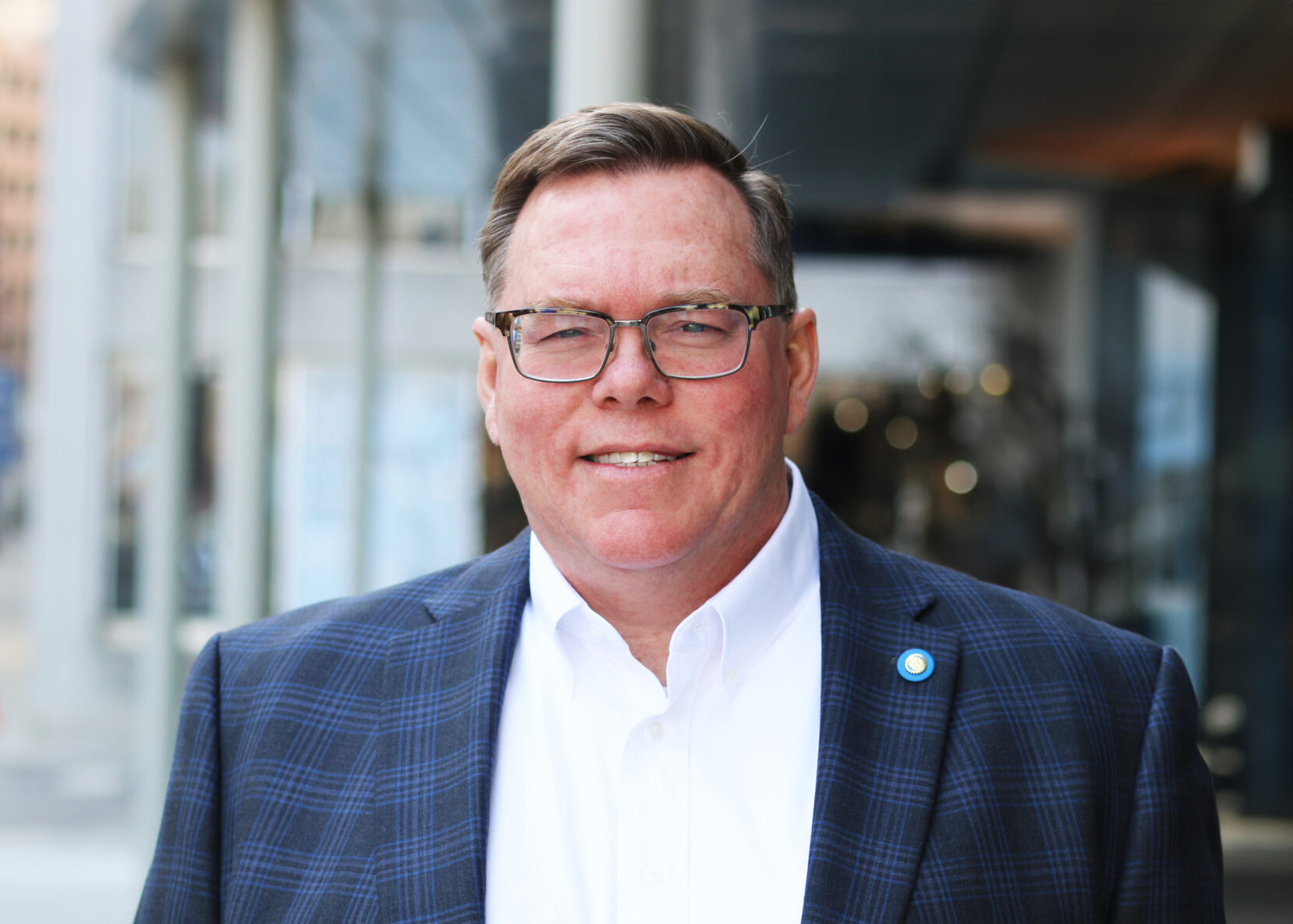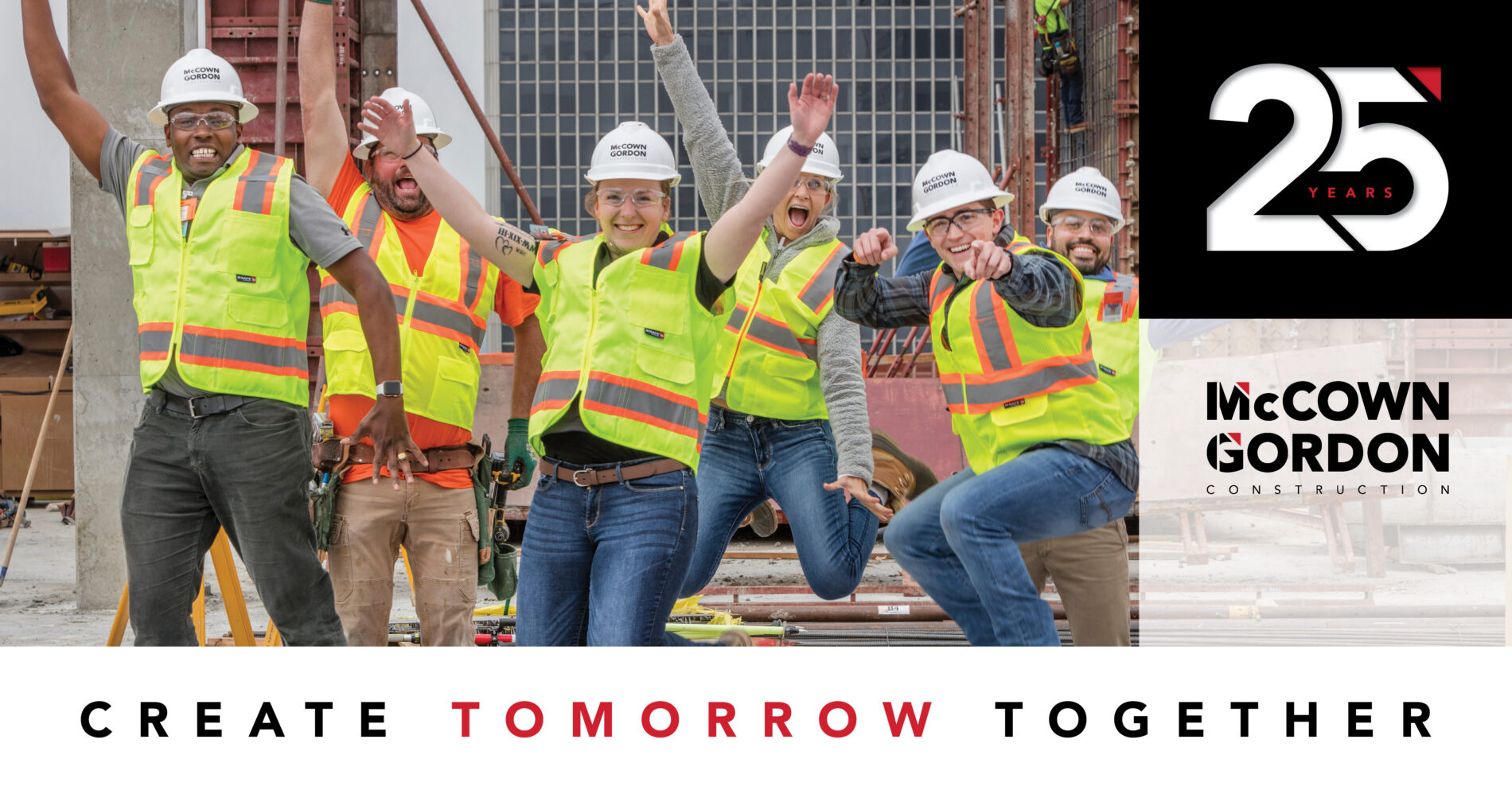5 Key Takeaways from Recent AIA Panel: Embracing Collaboration and Creative Thinking During a Volatile Market

The architectural, engineering and construction industry has been on an unpredictable roller-coaster ride over the last few years. We’ve experienced ups and downs with constant price shifts, materials availability, labor shortages and fluctuating interest rates. However, as Emily Tilgner of McCownGordon, shared as the panel moderator, “No creativity comes without challenges. New challenges push us to think outside of the box (or get rid of the box!) We’re adapting, collaborating, and listening better than we ever have before.”
Despite the complexity of our current market conditions, it’s not all gloom and doom. The panel of designers and builders had a lot of optimism to share about how the industry is tackling these issues head-on and guiding owners through the process to continue building our world.

Here are several top takeaways from the discussion:
Managing Both Escalation and Increased Project Volume
“There’s a weird duality going on in the design world right now – construction costs more than most owners have budgeted and yet, right now is the cheapest time to build.” Kwame Smith, Principal at SFS Architecture, pointed out this phenomenon. This is especially apparent for many firms’ civic and public sector clients where long-range planning is typically completed 4-5 years out. Budgets simply haven’t been able to keep up with such dramatic, unpredictable escalation. However, since right now is still the best time to build, firms have been staffing up to meet the need for this acceleration of building projects.
Building on the theme of increased project demand, Julie Pierce, Principal with Henderson Engineers, stated, “We need to have the courage to make the right decisions. For Henderson, that means being strategic about which projects we’re pursuing. We need to be really focused on risk management and delivering success for our clients. A significant risk we need to consider is supporting the mental health of our people!” There’s a lot to be said about mental health in the aftermath of the pandemic and navigating market challenges, and one way for firms to support their teams is being selective and strategic about which projects they pursue so employees feel empowered to do their very best.
Geographical Market Impacts Lead to Collaborative Delivery on the Rise
“It’s no secret Kansas City volatility feels crazy. We’ve seen an annual average of 9-12% escalation in the last few years. Material and equipment shortages have been a challenge as well,” shared Scott Kimzey, Director of Preconstruction with McCownGordon. “Dallas is even more unpredictable with 12-15% escalation on an annual basis. In Kansas, both our Manhattan and Wichita offices and further West are just starting to see some of this escalation in the last 6-8 months. Our Kansas City team is helping them navigate these waters.”
“As a recent example of how volatile our market is, in late July/Early August, glass suppliers across the United States had a 40% price increase,” shared Adam Boeckmann, President, Architectural Wall Systems. It’s still not just pricing, though, Julie Pierce added. “Just this last week, we were quoted 80 weeks (about a year and a half) for switchgear!”
A bright spot? More owners are embracing collaborative delivery methods, especially on the Missouri side. That’s one way construction managers and innovative trade partners can help mitigate risk on projects. Clients may not be able to achieve everything they want at the end of the day, but at least they aren’t reaching the end of a design process to discover project costs are double what they expected. Or realizing the possibility it could take twice as long to build due to procurement lead-times. Scott noted Kansas City has sophisticated trade partners that help designers and contractors understand what’s coming down the pike in terms of both pricing and delivery timelines.
Market Trends: Negative Shifts in Office, Positive Movement in Residential and Signs of Slow-down in Industrial
Austin Bradley, Executive Vice President, EPC Real Estate Group explained what developers are seeing as emerging trends. “Office is probably the biggest negative shift right now; vacancies are up 6% from this time last year. Net absorption is headed the wrong way, too. It’s an obvious pandemic impact. Class A office space is doing ok, but class B is struggling.”
In residential, there’s definitely positive shifts. As a recent example, we’re currently in the process to demolish a class B office area and replace it with residential in Fairway, Kansas. We’re at all time occupancy highs – 96-97% and all-time highs in rent growth. This is tied to interest rates and low-housing inventory.
Industrial is continuing to trend positive, but we are seeing signs of slow-down. It’s at 48% pre-lease and there’s 42% more under construction than this time last year in Kansas City. Absorption is starting to trend down, though–one of the first slow down signals. It is still ‘on fire’ comparatively but starting to slow down.”
Domestic Sourcing of Materials Provides More Stability
Trade partners are being forced to get creative and tread these waters using new techniques. Adam Boeckmann with AWS shared, “We used to source a lot from overseas and started looking more domestic prior to COVID-19, but COVID-19 really accelerated things. We’ve started a custom designed fabricated wall system in our own factory in the U.S. Our very first installation started just two weeks ago.”
He added, “It’s a time for innovation. There are so many ways to speed things up and improve. The AWS example is obviously a benefit to the owner and project with a quicker delivery timeframe, but it’s also about creating a more stable work environment for employees which is a great asset.”
Reading the Crystal Ball – Future Projections
Ok, what does the crystal ball say – is there any end in sight? Well, not really.
“Every indication is showing this is here to stay for the short team; at least 65 weeks out,” Scott Kimzey of McCownGordon explained. “We’re currently projecting 9-12% for at least 12 months. We don’t expect things to return to previous escalation rates for 2-3 years; not sure if normal will ever return.” It is time to stop using market volatility as an excuse in our industry. It truly is the new normal, so firms need to work together to navigate the construction process.
Austin Bradley with EPC Real Estate Group agreed. “We also expect things to continue. Interest rates will probably peak next year at this time, and we’re seeing a likely reduction in deals moving forward.”
In Summary
Construction projects are inherently complex, long endeavors. This volatile market filled with uncertainty has left many of us feeling unnerved, concerned, even frustrated. But designers and builders are embracing collaboration and creative thinking. We’re navigating the market, mitigating uncertainty, and optimizing the current landscape – just like we always have.
Watch Now




